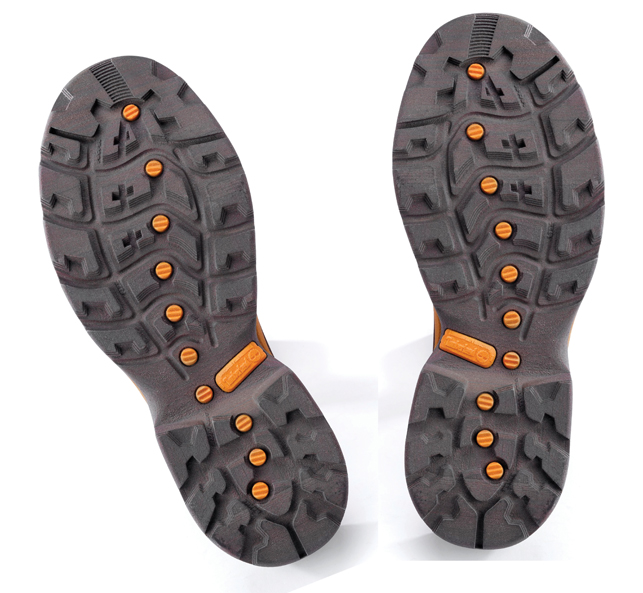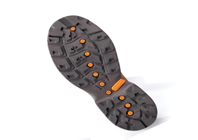Whether for work or recreation, Timberland products are a compelling blend of form and function. Engineers and marketers in the $1.5 billion company, based in New Hampshire, USA, collaborate closely in the development of every product, from initial concept to prototype, sample and, ultimately, in volume production.
The shoe must look good and perform well. While the upper is mostly fashion design, intense engineering comes in where the foot meets the insole and the outsole meets the street, with concepts such as arch-support and tread patterns refined in CAD software.

Until 2002, Timberland hired model makers to turn 2D CAD drawings into 3D prototypes. At a cost of $1,200, each took a week to create, the lead-time hamstringing the company’s ability to refine their models. As a result, it lengthened its design cycle or lived without the desired refinements.
“A 2D CAD drawing left too much to the imagination,” says Toby Ringdahl, computer-aided design manager in the company’s footwear product development and engineering group. “When the prototype was finally ready, it wasn’t exactly what people imagined. But a week is a long time to wait for a new iteration.” So Timberland assigned Ringdahl’s team to evaluate rapid prototyping options.
3D printing in house
Timberland chose the ZPrinter 310 System from Z Corporation; arguably the fastest, most affordable 3D printer. Its speed and the low cost of printing materials outdid rapid prototyping machines from other companies. In 2005, Timberland invested in the Spectrum Z510 System, the first high-definition colour 3D printer, providing 24-bit colour and 600 dpi resolution. Z Corp. has the only technology that can print parts in full colour, which can be used not only to produce a lifelike object, but for stress analysis, product labelling, or to highlight revisions.
Better, faster, cheaper
The Spectrum Z510 accepts CAD files from Timberland’s 3D mechanical design software and produces physical models affordably and quickly, making a substantial impact on efficiency and spending. Prototypes now take $35 and 90 minutes to make, enabling engineering and marketing employees to collaborate more often, and printing rapid colour prototypes on-site has enabled Timberland to compress its typical design cycle from three weeks to two.
The Spectrum’s large build area delivers additional time saving. Engineers can print full-size prototypes flat on the build area instead of on an incline, saving three hours of printing time.
‘The pressure is intense to quickly and affordably turn the marketer’s vision and the consumer’s taste into a reality that performs well, feels good and looks great’
Spectrum’s speed has resulted in product quality improvement. In the weeks Timberland recoups, it can pump out dozens of iterations of a design. More designers, engineers and marketers can see more products in a shorter time, helping refine footwear for fit, function and style. “We can now quickly do innumerable iterations and variations,” Ringdahl says. “And the designers and marketing managers can be sure the product is what Timberland is expecting and what people on the street are demanding.
“The investment in Spectrum also eliminates ancillary costs like time-consuming trips to examine shoe moulds in overseas plants. Since Timberland can now reach consensus for designs on 3D physical models, there’s no need for careful examination of the production shoe mould.
Colour is a key benefit, better conveying design intent. Spectrum’s unparalleled resolution enables details like lugs and print on the sole, or speed hooks on the upper to show up perfectly. “The closer the prototype is to real life, the less you leave to the imagination. Unfortunate surprises are eliminated,” says Ringdahl.
Increased sales
3D printing is making a direct impact on revenues. Collaboration between designers, engineers and marketers creates a product that is exactly what the market demands – meaning more sales – and sales people can show prototypes to major retail chains, an advantage over competitors who come with just sketches.
Timberland expects to reap additional benefits from 3D printing in the future. Its engineers will use shape analysis software and the Spectrum Z510 System to print prototypes that call out pressure points and interference in the insole.
“The pressure is intense to quickly and affordably turn the marketer’s vision and the consumer’s taste into a reality that performs well, feels good and looks great,” says Ringdahl. “Z Corp. printers have done exactly that for us.”
www.zcorp.com

We look at how Timberland uses rapid prototyping to great effect






